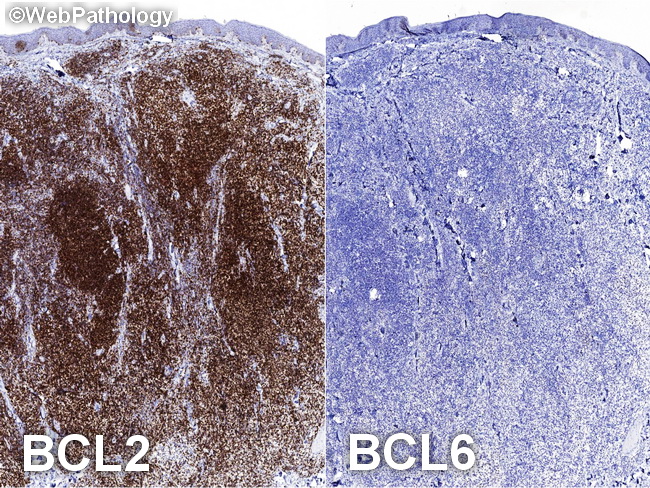Cutaneous Marginal Zone Lymphoma : Differential


Comments:
Cutaneous Marginal Zone Lymphoma (CMZL) - Differential Diagnosis: The main differential of primary CMZL is from B-cutaneous lymphoid hyperplasia (BCLH; aka pseudolymphoma or lymphocytoma cutis). Both entities share many histologic features, including reactive lymphoid follicles, a grenz zone, and polymorphic lymphoid infiltrate. Features favoring primary CMZL include: abundant reactive lymphoid follicles; follicular colonization by marginal zone cells; prominent plasmacytic differentiation; Dutcher bodies; B-cell:T-cell ratio of >3:1; aberrant CD43 expression by B-cells; and light chain-restricted plasmacytoid cells at the margins of the lymphoid infiltrate. Clonal B-cell receptor and immunoglobulin gene rearrangements have been noted in cases that otherwise have histologic features of BCLH. It has been suggested that perhaps CMZL and BCLH lie on a continuum of cutaneous B-cell proliferations with polyclonal BCLH at one end of the spectrum, overt primary CMZL at the other end, and in between lie cases with morphology of BCLH and oligo- or monoclonal B-cell population that may eventually evolve into lymphoma. This image shows BCL2+ and BCL6- tumor cells in primary CMZL.



